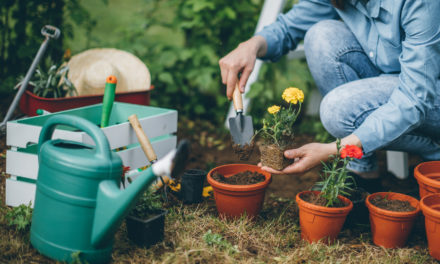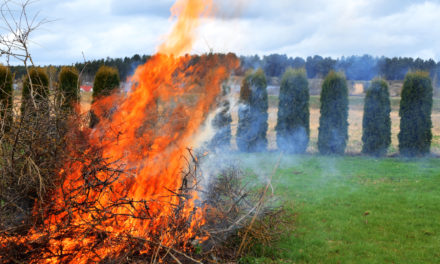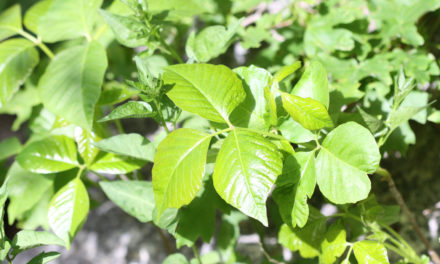Nothing says “summer” to your taste buds more sweetly and juicily than a ripe, red tomato picked fresh from your garden.
More than 85 percent of home gardeners grow them each season, reports the National Gardening Association.
Tomatoes planted in the Pikes Peak region in late spring typically mature and are ready for harvest in August. But what if your tomato plants are under attack by disease, fungus or pests?
“Everybody’s going to have one or two tomato plants that are going to have some kind of problem. I don’t care if you have the same variety of plant growing next to each other — they can all react differently. It’s just nature,” said Linda Curtis, manager of Spencer’s Produce in Colorado Springs.
Customers seeing tomato-plant problems typically bring an example to the store to be diagnosed, Curtis said. Some common problems include blight, blossom end rot, leaf rot, leaf roll, herbicide damage and pests.
1. Blight
Blight is a fungus that is very common with tomato and potato gardening, and it usually occurs in warm, wet weather. Signs include yellow, brown or black spots forming on leaves in a concentric ring pattern, usually on a tomato plant’s lower leaves, which can turn yellow and dry up.
“With all the rain we’ve had, a lot of people are experiencing blight problems,” Curtis said. “You can use a broad spectrum fungicide to treat this. But if it’s too far gone, sometimes you just have to pull the plant.”
Curtis said a lot of local gardeners favor heirloom tomato varieties this year, and those seem to be more prone to getting blight.
2. Blossom end rot
Another common tomato issue is blossom end rot, which also can occur in peppers, cucumbers, melon, beans and eggplant. The end of the fruit develops a sunken, dark spot.
“Blossom end rot is caused by a calcium deficiency,” Curtis said. “We’re trying to train people while they’re planting in spring to put a calcium product in the hole before they plant, and then use the product two more times during the season.”
She also recommends using Yield Booster spray in the area where flowers are developing on the plant “to help correct the darkening spot on the bottom of the tomato. You can correct it so future tomatoes on the plant won’t develop the end rot.”
3. Leaf spot
Leaf spot is a soil-borne fungus spread by water droplets. It’s the most common foliar disease of tomatoes and occurs when spores spread to new leaves from splashing rain or overhead watering, says Spencer’s website, spencersgardens.com.
“It’s a bad habit a lot of people have. They think they have to shower their plant. Tomatoes hate water on their leaves. You have to water at the base of the plant,” Curtis said.
Lower leaves become infected first by small water-soaked spots that become circular. Lesions may develop with grayish-white centers and dark edges. Infected leaves turn yellow, wither and fall off.
4. Leaf roll
This is a problem evidenced when a tomato plant’s leaf edges roll upward and inward and may overlap.
“It’s from irregular watering. A lot of people get freaked out when they see this, but it doesn’t affect plant growth,” Curtis said.
Symptoms of leaf roll may be temporary and disappear or could persist through the growing season.
5. Herbicide damage
Herbicides sprayed by a homeowner or neighbor can drift onto plants and cause stems to become stiff and brittle with possible outgrowths.
“This happens when someone has been spraying a chemical, normally a weed killer,” Curtis said. “A lot of people don’t realize that when it gets extremely warm out, like it has recently, a product will drift onto plants. A plant can end up looking like it’s distorted or damaged. On a vegetable plant, it looks very deformed. It has a downward curling of the leaves and tips, as opposed to the upward curling of leaf roll.”
Ways to remedy this are to water the plant well, fertilize it and prune the bad area, she said.
6. Pests
The plump, green tomato hornworm blends in with tomato-plant stems. These hungry pests feed nonstop, leaving a wake of spotty and chewed leaves and fruit. They can grow up to 5 inches long, according to the Farmer’s Almanac.
“It’s an ugly guy with suction cups on its feet. But it does turn into a pretty little critter — a beautiful moth,” Curtis said.
Using products such as dipel dust insecticide can dissuade the caterpillar from feasting on your crops. Or you can get rid of the worms the old-fashioned way: “I’ve always just kind of pulled them off and gotten rid of them,” she said.
Other pests you might see on tomato plants are flea beetles, which are likely gone already for the season, Curtis said. They leave little holes on the leaves. Occasionally spider mites infest the plants. Their webbing deforms the tomato leaves.
A good way to avoid these problems is by doing some preparation and continued care.
“It’s just always starting with really good soil, supporting tomatoes, and fertilizing the soil,” she said.
Or you can always buy fresh tomatoes as an alternative.
“We do have fresh tomatoes from the Western Slope for sale that are delicious,” Curtis said. “If you’re having problems with the plants in your garden, come get some. They are the best!”

 Photo Credit: valentinrussanov (iStock).
Photo Credit: valentinrussanov (iStock). 



Comment on: Growing Tomatoes: 6 Common Problems You Might Encounter